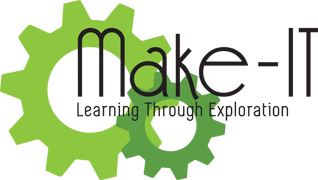| Challenge Activities |
|
| |
| Download a PDF file of Telescope Challenge Activity. |
| Grade Level: |
Science content statement addressed: |
| Elementary |
Earth and Space Sciences
Cycles and Patterns in the Solar System
The solar system includes the sun and all celestial bodies that orbit the sun. Each planet in the solar system has unique characteristics
Physical Science
Light, Sound and Motion
Light and sound are forms of energy that behave in predictable ways |
| |
|
| Overview: |
Students build a telescope from paper towel rolls and simple lenses that can be adjusted for different distances. The students then use their telescopes to observe different objects in the solar system and record their findings. |
| |
| Materials: |
|
| |
| Procedure: |
-
Obtain a variety of old lenses from a local eye doctor. You can also order lenses
-
Allow students time to explore looking through single lenses and pairs of lenses. Students should observe different capabilities and powers of the single lenses.
-
Next have students investigate pairs of lenses and how they interact with each other. Have them make notes and measurements as to which combinations produce the sharpest images of objects the farthest away.
If available use a spreadsheet (for example Google Sheets or MS Excel) to record types of lenses, distance and level of sharpness.
-
Students design and build a telescope from paper towel rolls and simple lenses that can be adjusted for different distances, with either different slots in the tubes, or sliding tubes.
-
The students then use their telescopes to observe different objects in the solar system and record their findings.
More information about how simple make it yourself Telescopes work. |
| |
| Post-Project Classroom Discussion/Activities: |
Discuss the trial and error process when building your Telescope.
What did you discover? Did Lenses have to go in a certain order?
What if you were to change one lense to a different stength? Predict what would happen. |
| |
Adapted from a lesson provided by STEM is Elementary |

